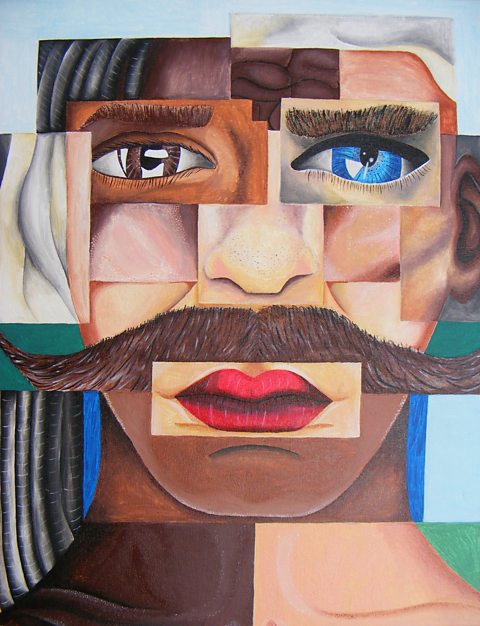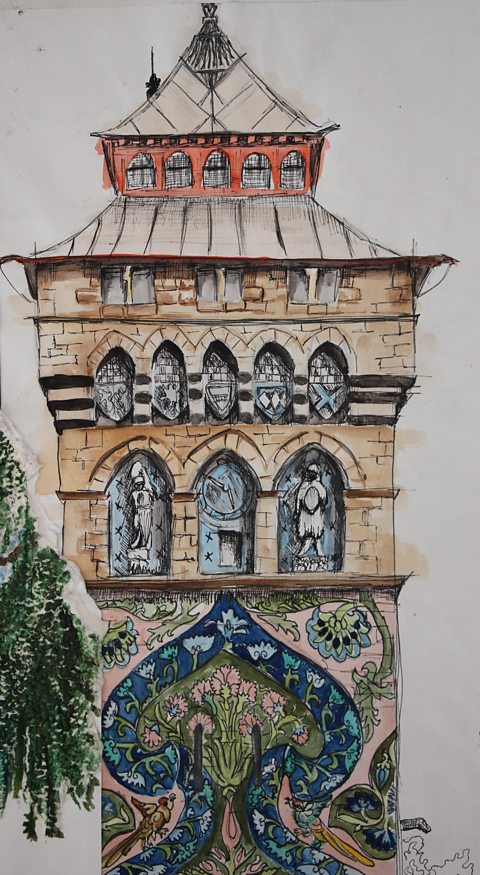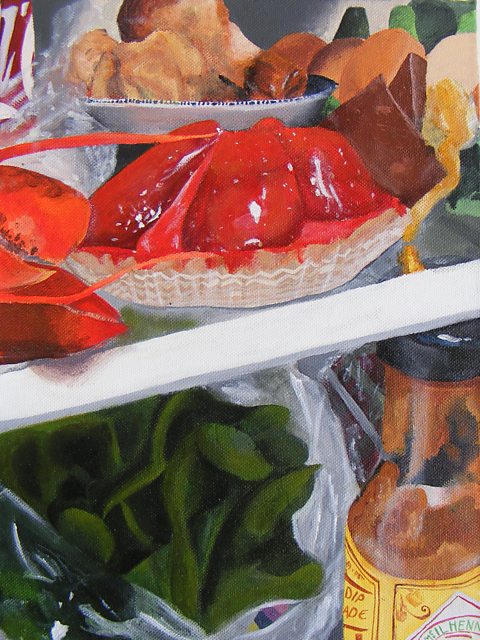Painting

Painting is the art of using pigment A substance that is used for colouring. Pigments are usually dry powders which can be mixed with oil, water or another material to produce coloured media. to apply colour to a surface such as paper or canvas to create pictures. The pigment may be in a wet form, such as paint, or a dry form, such as pastels.
Some artists create realisting paintings:
- portraits
- landscapes
- still life
Others create abstractionArtistic treatment of a subject which explores and portrays it in a way that does not directly reflect how it looks. paintings:
- colours
- shapes
- lines
Paints
Each type of paint has its own unique qualities, advantages and disadvantages. Which you select will depend on the effect you want to achieve.
Watercolour

Watercolour comes in metal tubes or as dry tablets that need to be mixed with water. It also comes in a liquid form that is commonly used for airbrushing.
Watercolour paint is a translucent medium suitable for many purposes. Watercolour is often used to create a muted, subtle image and has a softened look.
Watercolour can be a good choice if you want to work quickly or if you are on location as it requires little extra equipment, dried quickly and can be cleaned from brushes with just water.
A drawback of using watercolour is that it is difficult to fix mistakes. You need to know what you are doing because you can't make changes by painting over them. You also need to be careful that you don't damage the surface you are using by repeatedly wetting it.

Gouache

Gouache paint is often called 'Designers gouache.' It is opaquenessHow much something blocks light. The more opaque something is the more solid and the less see-through it is, dries quickly and produces a mattNon-shiny. Dull and flat. finish.
It is used by graphic designers, illustrators and commercial artists.
It is also referred to as 'opaque watercolour' because it can be used like watercolour but is not transparentSee-through. .

Ink

While ink can be used with a pen to create drawings, it can also be used in a similar way to watercolour.
Used on its own, ink gives a rich, glossy result. When mixed with water it becomes transparent and can create subtle variation of tone and colour.
Inks come in bright colours which can create vibrant results. The more these are mixed with water, the more muted they become. Mixing complementary colours will also tone down the brightness.
As with watercolours, you should mix coloured inks together before you apply them to your paper.

Oil paint
Oil paint is rich and vibrantBright, strong and full of energy.. Oil paintings are often very detailed and colourful and are composed of many layers of paint.
Oil paint is a permanent and durableLong-lasting. Able to withstand wear and damage. medium. However it is expensive and can take a very long time to dry - between six months and a whole year where there are many layers.
Acrylic

Like oil paint, acrylic paint is well-suited for detail, but it is easy to use.
Depending on the techniqueThe method used to create something, eg cross-hatching is a technique used to create tone in a drawing. used by the artist, acrylic can produce results that are like oil or watercolor.
Acrylics are water-based which means they can be cleaned from brushes more easily.
Acrylic dries very quickly so should be kept moist on the paletteA flat board on which paints can be mixed to produce different tints, shades, tones or colours to prevent drying out.

Pastels

Work created with pastels can be compared to painting or drawing. When a whole surface is covered with pastel, the result is often called a pastel painting. A pastel drawing has parts of the surface showing through.
Pastels usually come in the form of sticks that consist of pure powdered pigment and a binder. An artwork made using pastels is called a pastel, a pastel painting or a pastel drawing.
Chalk pastels have a soft, matt quality and are easy to use. Colours can be blended by overlaying and using smudging techniques. A dusty surface is created and a fixativeA substance used to hold something in position or to prevent it mixing with other materials such as water is needed to keep in place.
Oil pastels are also made from pigments but are combined with waxes and fats. They are good for paintings with strong colours. They are slightly harder to blend than chalk pastels but have the advantage that they do not need a fixative.
Oil pastels can be combined with other materials such as inks or watercolours then scraped away in sections to give a wax resistA substance used to coat a surface and protect it during a particular process. effect. White spirit can be used to create a more painterly effect.
